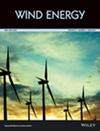美国东南部风力发电设施的低影响选址
IF 3.3
3区 工程技术
Q3 ENERGY & FUELS
引用次数: 0
摘要
尽管2021年美国的风力发电装机容量达到132吉瓦,是2008年的四倍多,但东南部地区仍存在明显的空白。该地区风力发电开发不足的原因是风力资源相对贫乏,还有其他有竞争力的能源,以及政治上的反对。然而,风力涡轮机轮毂高度的急剧增加,使其能够收集离地面更远的更快的风速,再加上开发可再生能源的紧迫感日益增强,表明在不久的将来,包括东南部在内的所有地方都将大力发展风能。然而,由于担心公用事业规模的风力发电场对土地的巨大需求可能会破坏宝贵的生态系统,用可再生能源取代化石燃料的热情有所减弱。在本文中,我们确定了风力发电装机容量最不可能破坏美国东南部野生动物和敏感自然区域的地区。生成的地图排除了由于环境问题或技术考虑而不适合开发风力发电的地理区域,对应于五个类别。由此产生的地理空间产品表明,即使将相当大的区域从考虑中剔除,仍有大量的土地可供风能开发,以满足东南部的能源需求和清洁能源目标。本文章由计算机程序翻译,如有差异,请以英文原文为准。
Low impact siting for wind power facilities in the Southeast United States
Abstract Although installed wind power generation capacity in the United States reached 132 GW in 2021, more than quadruple the capacity in 2008, a noticeable void exists in the Southeast. Scant wind power development in this region is due to relatively poorer wind resources, other competitive energy sources, and political opposition. However, the dramatic increases in wind turbine hub height, which allow harvesting the faster wind speeds that occur farther from the ground, combined with a growing sense of urgency to develop renewable energy, point to a near future with significant wind development everywhere, including the Southeast. Nevertheless, the enthusiasm for replacing fossil fuels with renewable sources is tempered by fears that the vast land requirements of utility‐scale wind farms may disrupt valuable ecosystems. In this paper, we identify the areas where installed wind power capacity is least likely to disrupt wildlife and sensitive natural areas in the southeastern United States. The generated maps exclude geographic areas unsuitable for wind power development due to environmental concerns or technical considerations corresponding to five categories. The resulting geospatial product suggests that even after removing sizable areas from consideration, there is significant land for wind development to meet the Southeast's energy needs and clean energy goals.
求助全文
通过发布文献求助,成功后即可免费获取论文全文。
去求助
来源期刊

Wind Energy
工程技术-工程:机械
CiteScore
9.60
自引率
7.30%
发文量
0
审稿时长
6 months
期刊介绍:
Wind Energy offers a major forum for the reporting of advances in this rapidly developing technology with the goal of realising the world-wide potential to harness clean energy from land-based and offshore wind. The journal aims to reach all those with an interest in this field from academic research, industrial development through to applications, including individual wind turbines and components, wind farms and integration of wind power plants. Contributions across the spectrum of scientific and engineering disciplines concerned with the advancement of wind power capture, conversion, integration and utilisation technologies are essential features of the journal.
 求助内容:
求助内容: 应助结果提醒方式:
应助结果提醒方式:


